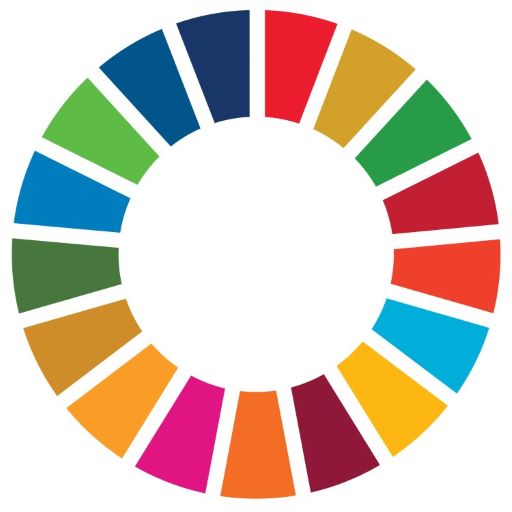This self-study module provides a mix of digital lectures and one webpageon the general theme of Leave No One Behind.
The module consists of 5 mandatory references for you to study at your own pace during Ideation.
You are encouraged to expand your investigations beyond the module, and to seek advice and inspiration from the peers and experts you meet during Ideation.
Reference: Ryhl, Camilla (2022) Universal design and Leave No One Behind. Universal Design Hub – Bevica Fonden.
Format: Video (speech in Danish, captions in English) (Work load: 14 minutes)
Keywords: Concept, History, View of humanity, Sustainable Development Goals, Disability
Description: This video is an introduction to the concept of Universal Design. It explores the history of the concept, provides examples of its application, and clarifies how Universal Design can work as a lever for the UN Sustainable Development Goals.
Link: https://universaldesignhub.dk/lunch-bag-lecture-universal-design-and-leave-no-one-behind/
Transcript: https://www.bevicascholarship.dk/wp-content/uploads/2023/01/Transcript-Camilla-Ryhl.pdf
Reference: United Nations (2022) Leave No One Behind.
Format: Webpage (Work load: 1 page)
Keywords: Pledge, Commitment, Responsibility, Reach the furthest behind first
Description: This webpage documents how the 193 United Nation Member States of the 2030 Agenda have committed to Leave No One Behind in their implementation of the SDGs. Moreover, it stresses how Member States will “endeavour to reach the furthest behind first” from an essential recognition of how “the dignity of the human person is fundamental”.

Reference: Lawson, Anna (2024) Universal Design, Equality and Accessibility. Keynote Speech – UD2024 Conference.
Format: Video (34 minutes – Selected time span: 00:10:06 – 00:40:40)
Keywords: Universal Design, Human Rights, CRPD, Equality, Accessibility
Description: In this keynote speech, Professor of Law, Anna Lawson showcases how Universal Design is situated in the international human rights framework, and an obligation in the UN Convention on the Rights of Persons with Disability. Ultimately, Lawson argues how Universal Design is embedded in and a pre-condition for the fulfilment of human rights.

Reference: Ono, Masumi (2024) Universal Design and the 2030 Agenda for Sustainable Development. Keynote Speech – UD2024 Conference.
Format: Video (27 minutes – Selected time span: 01:18:15 – 01:45:20)
Keywords: Universal Design, Sustainable Development Goals, 2023 Agenda, Social Inclusion
Description: In this keynote speech, Chief of Social Inclusion and Participation Branch in the UN Department for Economic and Social Affairs, Masumi Ono argues how Universal Design is important for the 2030 Agenda and vice versa. According to Masumi Ono, universal design principles, if embedded in policy making, can offer an effective approach towards reducing inequalities, promoting social inclusion and insuring accessibility at local, national and global levels.

Reference: Wandel, Jens (2022) SDGs and Universal Design. Universal Design Hub – Bevica Fonden.
Format: Video (18 minutes)
Keywords: UN, Sustainable development, Sustainable Development Goals, Human agency, Disability
Description: In this video, the 17 Sustainable Development Goals are broken down into 4 aspects of our lives. The video discusses sustainability, Universal Design and the Leave No One Behind agenda, and how they are all connected.
Link: https://universaldesignhub.dk/sdgs-and-universal-design/
UNDP (2018) What does it mean to leave no one behind? A UNPD discussion paper and framework for implementation. https://www.undp.org/library/what-does-it-mean-leave-no-one-behind
United Nations (2022) The 17 Goals. https://sdgs.un.org/goals
United Nations (2024) SDGs and Me. https://ec.europa.eu/eurostat/cache/visualisations/sdgs/
The World Bank (2022) Disability Inclusion. https://www.worldbank.org/en/topic/disability#1
WHO (2023) Disability. https://www.who.int/news-room/fact-sheets/detail/disability-and-health
Vavik, T and Keitsch, M. (2010) Exploring Relationships Between Universal Design and Social Sustainable Development: Some Methodological Aspects to the Debate on the Sciences of Sustainability. https://onlinelibrary.wiley.com/doi/abs/10.1002/sd.480
Abualghaib, Ola; Groce, Nora; Simeu, Natalie; Carew, Mark T.; Mont, Daniel (2019) Making Visible the Invisible: Why Disability-Disaggregated Data is Vital to “Leave No-One Behind”. Sustainability 2019, 11(11), 3091.
Ericsson, Stina; Wojahn, Daniel; Sandström, Ida; Hedvall, Per-Olof (2020) Language that Supports Sustainable Development: How to Write about People in Universal Design Policy. Sustainability 2020, 12(22), 9561.
UN Sustainable Development Group (2022) Operationalizing Leaving No One Behind. https://unsdg.un.org/resources/leaving-no-one-behind-unsdg-operational-guide-un-country-teams
BEVICA FONDEN
Linnésgade 18, 1. sal
1361 København K
Cvr-nr. DK-75576315
EAN-nr. 5797200036056
BEVICA FONDEN is a foundation that, through partnerships, works to strengthen conditions for self-governance and independent life for people with mobility impairments. This work is based on research and knowledge on Universal design as an interdisciplinary and value-based concept.
Follow us on LinkedIn
View my Application history
Copyright 2022 © Bevica Fonden